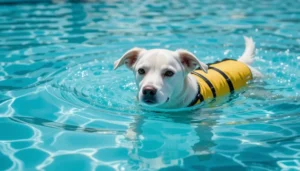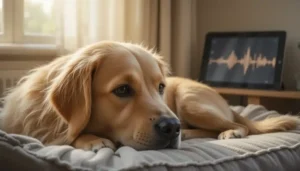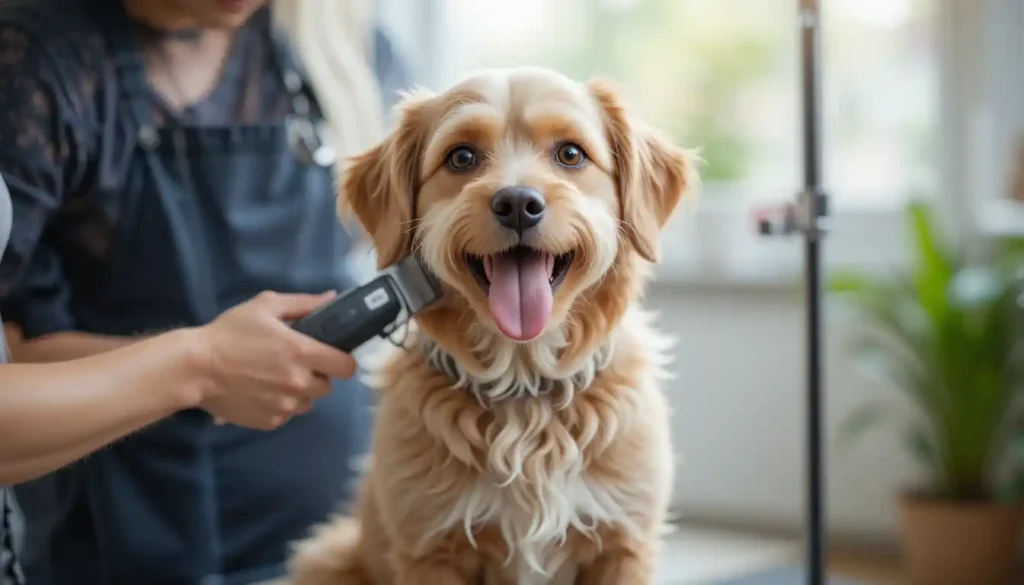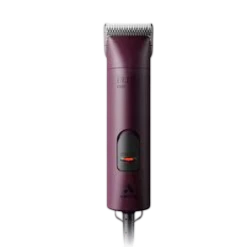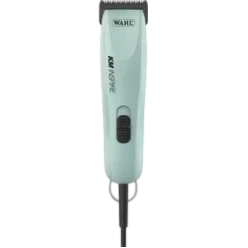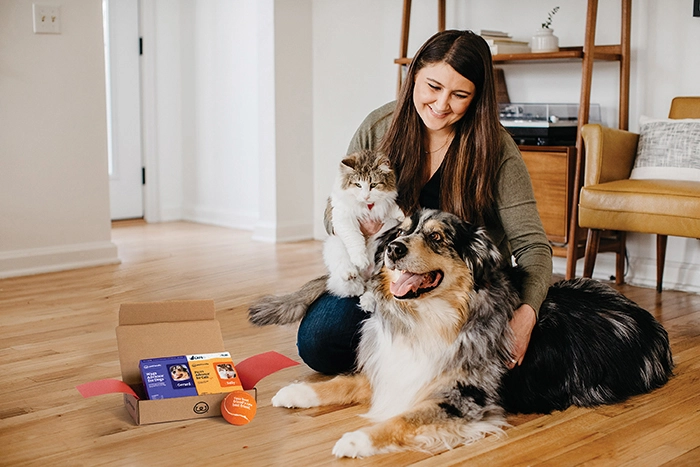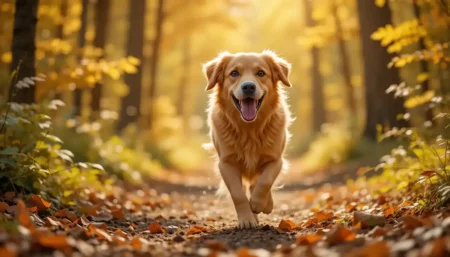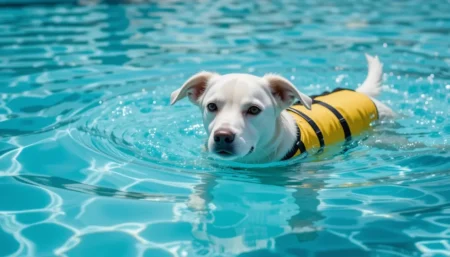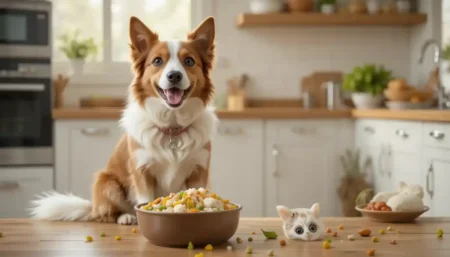Quality dog clippers prevent skin irritation, reduce grooming stress, and save money on professional services. The right clippers match your dog’s coat type, size, and sensitivity while delivering smooth, quiet operation.
We’ve tested top models to find the safest, most effective options for stress-free at-home grooming.
Professional groomers and veterinarians agree that proper clipper selection prevents common issues like clipper burn and uneven cuts that lead to matting and skin infections.
Why Quality Dog Clippers Matter for Pet Health
Using the right dog clippers isn’t just about appearance—it directly impacts your dog’s physical comfort and emotional well-being.
Poor-quality clippers cause painful skin nicks, uneven cuts that lead to matting, and excessive noise that creates lasting grooming anxiety.
Veterinary dermatologists report that improper clipping accounts for 30% of preventable skin irritations in home-groomed dogs.
When dogs experience painful grooming sessions, they develop fear responses that make future care difficult.
More seriously, dull blades tug at fur instead of cutting cleanly, causing micro-tears in the skin that invite bacterial infections.
Quality dog clippers solve these problems through precise engineering that respects canine skin sensitivity and coat structure.
Key health benefits include:
- Reduced skin irritation from sharp, properly tensioned blades
- Prevention of matting through consistent cutting performance
- Lower stress levels from quiet operation and smooth handling
- Early problem detection during close-contact grooming
- Cost savings by avoiding emergency vet visits for grooming injuries
For dogs with sensitive skin or medical conditions like allergies, the right clippers become essential healthcare tools.
Professional groomers emphasize that investing in quality dog clippers pays off through fewer vet bills and a happier, healthier pet.
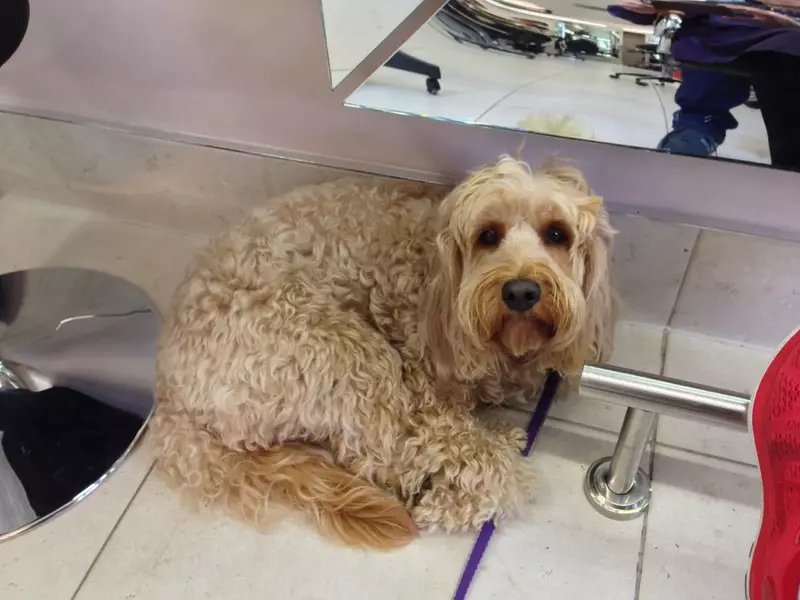
Types of Dog Clippers for Every Need
Choosing the right type of dog clippers depends on your dog’s specific characteristics and your grooming goals.
Not all clippers perform equally across different coat types, and selecting based solely on price often leads to frustration and compromised results.
Consider your dog’s size, coat density, and temperament when evaluating options.
Corded vs. Cordless Models
Corded clippers deliver consistent power for thick-coated breeds but limit mobility. Cordless models offer freedom of movement but require careful battery management.
For large dogs with dense fur, like Newfoundlands or Saint Bernards, corded clippers provide the sustained power needed for efficient grooming without overheating.
Corded advantages:
- Unlimited runtime for large or thick-coated dogs
- Consistent cutting power through dense fur
- Generally more powerful motor for tough jobs
- Lower long-term cost (no battery replacements)
Cordless advantages:
- Freedom to groom in any location (no outlet needed)
- Safer around water (no electrocution risk)
- Quieter operation reduces dog anxiety
- Easier handling for senior or arthritic owners
For most home users, cordless dog clippers strike the best balance, especially for small to medium breeds.
Models like the Andis ProClip offer 90+ minutes of runtime—enough for most grooming sessions—with quick charging capabilities.
Blade Types and Sizes
Blade selection determines cut length and suitability for different coat types. Most dog clippers use detachable blades with numbered sizes indicating cutting length.
The Andis #3F blade (1/2 inch) works well for general body clipping on medium-coated breeds, while the #10 blade (1/16 inch) suits sensitive areas like paws.
Common blade sizes explained:
- #30 (1/100 inch): Surgical precision for medical areas
- #10 (1/16 inch): Face, feet, and sanitary trimming
- #7 (3/32 inch): Short summer cuts for thick-coated breeds
- #4F (1/2 inch): All-purpose length for most body clipping
- #1F (1 inch): Longer cuts for show dogs or sensitive skin
Professional groomers keep multiple blade sets on hand for different tasks. Ceramic blades stay cooler during extended use but require careful handling, while steel blades withstand accidental drops but heat up faster.
Professional vs. Home-Use Models
Professional dog clippers deliver salon-quality results but often overwhelm home users with complexity and noise.
Home-use models prioritize ease of operation and quiet performance at the expense of raw power.
For occasional grooming of small breeds, home-use clippers like the Wahl Bravura Perform provide sufficient power without intimidating noise levels.
Professional model features:
- Higher RPM (rotations per minute) for faster cutting
- Interchangeable blade systems
- Commercial-grade durability
- Louder operation (70+ decibels)
- Higher price point ($150+)
Home-use model features:
- Quieter operation (55-65 decibels)
- Simplified controls
- Lighter weight for extended use
- Lower cost ($50-$120)
- Adequate power for most household needs
Most veterinarians recommend starting with a quality home-use model unless you groom multiple dogs regularly.
The Andis Excel 5-Speed represents the ideal middle ground—powerful enough for most needs with adjustable speed settings for different coat types.
Top Recommended Dog Clippers
Here are a few top-rated dog clipper brands and models that consistently receive positive reviews from both professional groomers and pet owners:
Wahl Professional Animal ARCO Cordless Pet Clipper Kit
Pros: Easy to hold and maneuver, five-in-one adjustable blade, four guide combs, leaves fur even and smooth, suitable for all breeds, includes a one-year warranty.
Cons: Not the quietest clippers.
The Wahl Professional Animal ARCO Cordless Pet Clippers are a great all-around choice for most dog owners. They offer a good balance of power, versatility, and ease of use.
Oneisall Dog Rechargeable Cordless Clippers
Pros: Easy to use for touch-ups, includes six guide combs, cordless, and very quiet.
Cons: Battery life may not be sufficient for grooming large dogs, and blades could be sharper.
The Oneisall Cordless Dog Clippers are a budget-friendly option perfect for quick trims and touch-ups between professional grooming appointments.
Andis 24675 UltraEdge 2-Speed Detachable Blade Clipper
Pros: Professional quality, durable, easily detached blade for cleaning, and not noisy.
Cons: No guide combs included, more expensive than some.
The Andis 24675 UltraEdge 2-Speed Clipper is a powerful corded option suitable for dogs with thick coats and heavy shedding.
Wahl KM Inspire
Pros: Metal guide combs with labeled sizes, sturdy and well-made, resulting in a smooth and well-blended coat.
Cons: Metal blades can be difficult to remove for oiling.
The Wahl KM Inspire is a high-quality, professional-grade clipper that delivers exceptional results. It’s a great investment for experienced home groomers or those with multiple dogs.
Ruri’s Cordless Low-Noise Electric Pet Trimmer is an excellent choice for trimming paws, faces, and other sensitive areas. Its quiet operation makes it ideal for anxious dogs.
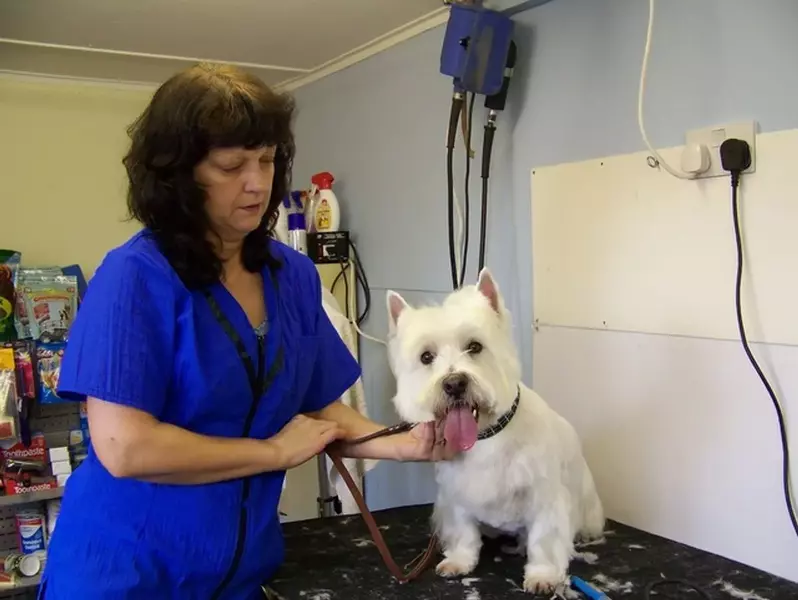
Grooming Techniques for Different Coat Types
Understanding your dog’s specific coat type determines which dog clippers and techniques will deliver safe, effective results.
Using the wrong approach can damage the coat, cause skin irritation, or create uneven cuts that lead to matting.
Always match your tools and methods to your dog’s unique coat characteristics.
Smooth-Coated Breeds (Labradors, Boxers)
Smooth coats require minimal clipping but benefit from regular maintenance to reduce shedding.
Use dog clippers with #4F or #5F blades for body clipping, moving against hair growth in slow, overlapping strokes.
For Labradors and similar breeds, focus on the underbelly and leg areas where mats commonly form.
Essential techniques:
- Use lower speed settings to avoid cutting too close
- Maintain consistent pressure—don’t press hard against skin
- Clip in the direction of hair growth for show dogs
- Clip against growth for pet trims to reduce shedding
- Finish with a slicker brush to remove loose hairs
Smooth-coated dogs rarely need full clipping but benefit from quarterly “sanitary trims” around paws and rear end.
Always check for hidden mats under collars and harnesses—these cause discomfort that owners often miss.
Double-Coated Breeds (Huskies, Samoyeds)
Never shave double-coated breeds—this damages their natural insulation and increases skin cancer risk.
Instead, use specialized undercoat blades with dog clippers to thin the dense undercoat while preserving the protective topcoat.
The Furminator deShedding Clipper works best for this purpose with its patented blade design.
Safe double-coat maintenance:
- Brush thoroughly to remove surface mats first
- Use clipper with #7 or #10 blade on low speed
- Work in small sections with light pressure
- Focus on high-mat areas: behind ears, under legs
- Never cut closer than 1/2 inch to the skin
Veterinary dermatologists warn that shaving double-coated breeds disrupts their natural temperature regulation, leading to painful sunburns and permanent coat damage.
Proper thinning with quality dog clippers maintains coat health while reducing shedding.
Curly/Wiry Coats (Poodles, Terriers)
Curly and wiry coats require regular clipping to prevent severe matting. Use higher-speed dog clippers with #4F blades for body work and #10 blades for detailed areas.
For Poodles and similar breeds, follow the “puppy cut” pattern with consistent length all over for easiest maintenance.
Curly coat best practices:
- Clip when coat is completely dry (never wet)
- Use a tension comb for even cutting on thick areas
- Maintain clipper angle at 30 degrees to skin
- Work with hair growth to avoid skin irritation
- Trim every 4-6 weeks to prevent matting
Professional groomers emphasize that skipping clipping appointments leads to painful matting that requires complete shaving—a traumatic experience for most dogs.
Regular maintenance with quality dog clippers prevents this common problem.
Essential Maintenance for Your Dog Clippers
Proper maintenance ensures your dog clippers perform safely and last longer, protecting both your investment and your dog’s comfort.
Neglected clippers develop performance issues that cause skin irritation and uneven cuts. Follow this simple routine to keep your clippers in top condition.
Daily Cleaning Routine
Clean your dog clippers after every use to prevent hair buildup that causes overheating. Start by removing loose hair with the included brush, then apply 2-3 drops of clipper oil along the blade teeth.
Run the clippers for 30 seconds to distribute oil, then wipe excess with a soft cloth.
Step-by-step cleaning:
- Turn off and unplug corded models (remove battery for cordless)
- Use a small brush to remove hair from the blade and housing
- Apply specialized clipper oil to the blade teeth and pivot point
- Run the clippers for 30 seconds to work in oil
- Wipe excess oil with a microfiber cloth
- Store in a protective case away from moisture
The Wahl Bravura Perform’s self-cleaning feature simplifies this process for home users. Never use household oils—clipper-specific lubricants prevent gumming and corrosion.
Blade Care and Replacement
Blades dull faster than clipper motors, requiring regular replacement for safe operation. Most quality blades last 6-12 months with proper care, but show dogs or frequent use may require quarterly replacement.
Watch for these warning signs that blades need replacement:
- Pulling or tugging instead of smooth cutting
- Uneven cutting patterns
- Excessive heat during use
- Visible nicks or rust on the blade surface
Blade maintenance tips:
- Oil blades before AND after each use
- Never soak blades in liquid
- Store blades in a protective case
- Replace both blades and the bottom blade together
- Keep spare blades on hand for quick changes
Professional groomers keep multiple blade sets on rotation to extend overall lifespan. For most home users, having one spare blade set ensures you’re never caught with dull blades when grooming time arrives.
Troubleshooting Common Issues
Even well-maintained dog clippers encounter occasional problems. Address these promptly to prevent damage to your clippers or discomfort for your dog:
- Overheating: Stop use immediately; check for hair buildup and oil blades
- Uneven cutting: Clean and oil blades, or replace if worn
- Excessive vibration: Tighten blade screws or replace the damaged blade
- Motor slowing: Check battery charge or clean motor vents
- Burning smell: Indicates a serious problem—discontinue use immediately
If your dog shows sudden resistance to grooming, inspect your clippers before continuing—many behavior issues stem from unnoticed clipper problems, causing discomfort.
Always test the clippers on your hand first to ensure they’re not too hot before resuming.
Safety Tips for Stress-Free Grooming
Grooming should be a positive experience that strengthens your bond with your dog. Following these safety protocols prevents accidents and builds your dog’s confidence in the process.
Never force grooming—stop immediately if your dog shows extreme fear or aggression.
Creating a Calm Grooming Environment
Your dog’s emotional state affects grooming safety more than any tool. Start sessions when both you and your dog are relaxed, preferably after exercise when energy levels are lower.
Set up in a quiet room with non-slip flooring and good lighting—avoid high-traffic areas that cause distraction.
Preparation checklist:
- Gather all supplies before starting (clippers, combs, treats)
- Ensure clippers are fully charged and blades oiled
- Choose a consistent grooming location to build a routine
- Play calming music at low volume
- Have high-value treats ready for positive reinforcement
For anxious dogs, begin with short “touch sessions” where you simply hold the clippers (turned off) near your dog while offering treats. Gradually increase exposure over several days before attempting actual clipping.
Proper Handling Techniques
How you hold and move the clippers determines both safety and results. Always maintain a firm but relaxed grip with your dominant hand while using your other hand to gently stretch the skin.
For most body areas, move the clippers against hair growth for the closest cut, but with growth on sensitive areas like the face and paws.
Safe handling practices:
- Keep fingers clear of the blade path at all times
- Use light, consistent pressure—never force clippers
- Work in small sections (2-3 inch squares)
- Maintain clipper angle at 30-45 degrees to skin
- Take frequent breaks to check your dog’s comfort
Never clip while your dog is standing on slippery surfaces—use a grooming table with a non-slip mat or sit on the floor with your dog between your legs.
Professional groomers use this “between the legs” position for maximum control and safety during home grooming.
Recognizing and Preventing Clipper Burn
Clipper burn appears as red, irritated skin caused by overheated blades or excessive pressure. It’s painful for dogs and creates entry points for infections.
Prevent it through proper technique and equipment maintenance—never continue if you see early signs of irritation.
Clipper burn prevention:
- Use sharp, properly tensioned blades
- Oil blades before each use
- Work in short sessions (15-20 minutes max)
- Check blade temperature frequently (should feel warm, not hot)
- Use lower speed settings for sensitive areas
If a clipper burn occurs, stop immediately and apply cool compresses. Consult your veterinarian before continuing grooming—severe cases require medical treatment. Quality dog clippers with ceramic blades significantly reduce burn risk through better heat dissipation.
FAQs
How often should I replace dog clipper blades?
Replace dog clipper blades every 6-12 months with regular home use, or immediately if they start pulling hair or causing skin irritation. Professional groomers replace blades more frequently—every 3-6 months with daily use. Always keep at least one spare blade set on hand to avoid grooming delays when blades wear out.
Can I use human clippers on dogs?
No, human clippers lack the power and blade design for canine coats and can cause serious skin injuries. Dog clippers feature specialized blade angles and motor strength for cutting through dense fur without burning skin. Using human clippers often results in uneven cuts, excessive noise that terrifies dogs, and potential skin damage from improper blade tension.
What’s the quietest dog clipper for anxious pets?
The Wahl Bravura Perform operates at just 58 decibels—the quietest quality dog clipper available. Its brushless motor technology significantly reduces noise while maintaining cutting power. For extremely noise-sensitive dogs, pair this with gradual desensitization training using treats while the clippers run at increasing proximity over several days.
How do I prevent matting between grooming sessions?
Prevent mats with daily brushing using the appropriate brush for your dog’s coat type. For double-coated breeds, use an undercoat rake weekly during shedding season. Never skip brushing sessions—mats form quickly and become painful. For existing small mats, apply detangling spray and work from the edges inward with your fingers before using a slicker brush.
Can I bathe my dog before using clippers?
Always clip on completely dry hair—never on wet coats. Wet hair clogs blades, causes uneven cuts, and increases clipper burn risk. Bathe your dog 1-2 days before clipping to allow the coat to return to its natural texture. For dogs with sensitive skin, ensure thorough drying with a low-heat dryer to prevent moisture-related skin irritation during clipping.
Conclusion
Choosing the right dog clippers transforms grooming from a stressful chore into a bonding opportunity that supports your dog’s health.
The Andis ProClip and Wahl Bravura Perform represent top veterinary-recommended options for most households due to their balance of power, quiet operation, and safety features.
For double-coated breeds, the Furminator deShedding Clipper provides essential undercoat management without damaging protective topcoats.
Always prioritize proper blade maintenance—oiling before and after each use—as dull blades cause painful skin irritation that undermines all your grooming efforts.
Consult your veterinarian about your dog’s specific coat needs, especially for skin conditions requiring special care.
The best dog clippers become valuable healthcare tools when selected thoughtfully and maintained properly, ensuring comfortable grooming sessions that keep your dog looking and feeling their best year-round.
Remember that patience and positive reinforcement create the foundation for successful home grooming—never rush the process when your dog shows discomfort.

